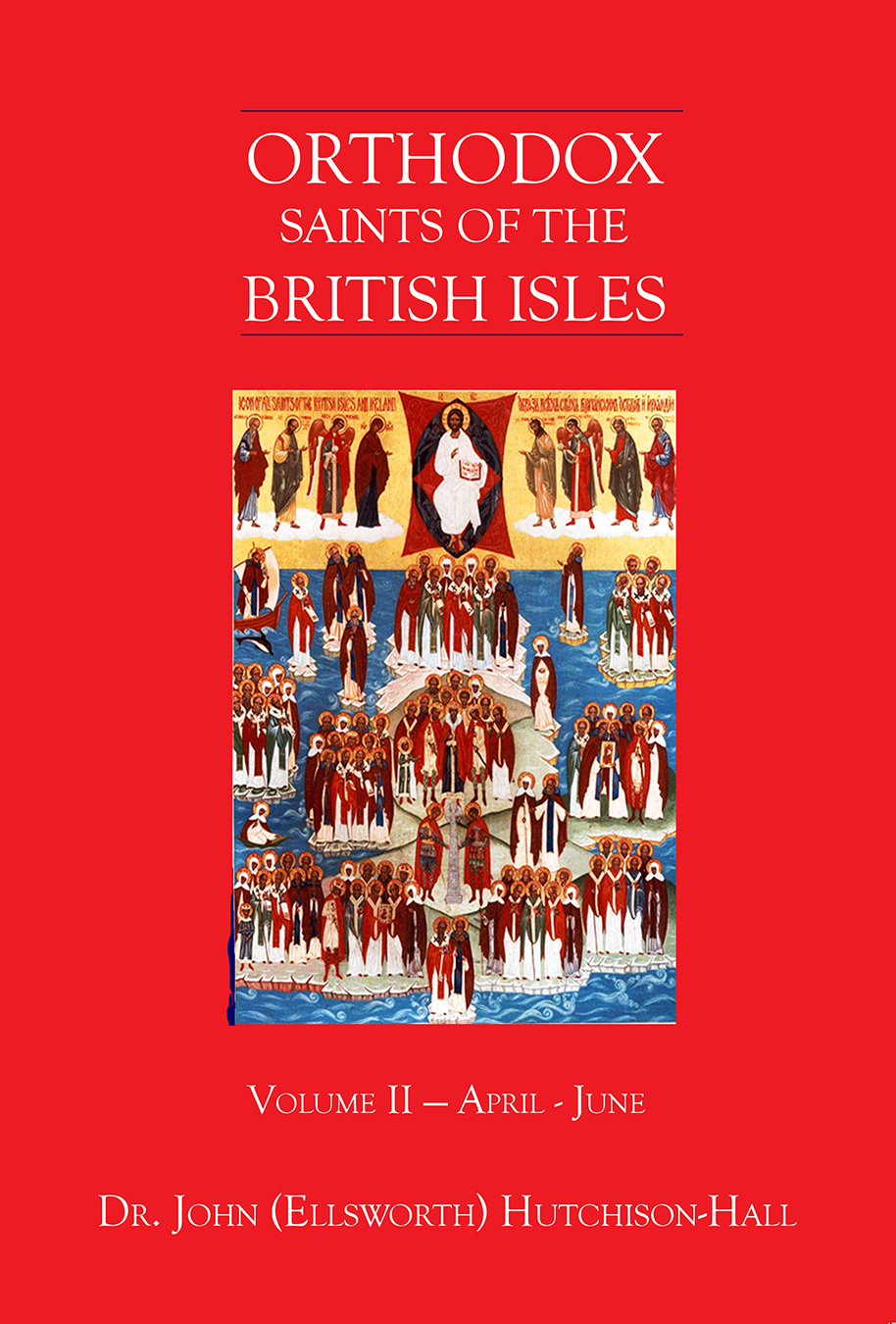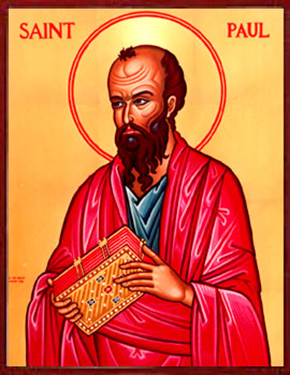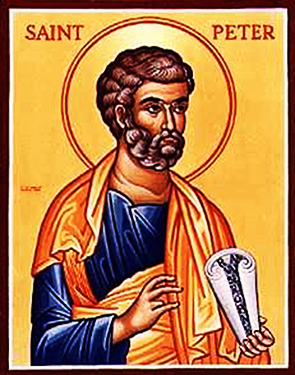
Orthodox Saints of the Pre-Schism
See of Rome
29th June (NS) — 16th June (OS) 2024
ACTINEA and GRAECINA of VOLTERRA, two martyrs of the Diocletianic Persecution (303–313). No further information is extant.
AURELIAN, Archbishop of Arles (southern France), and Papal Vicar of Gaul (France) from 546 until his repose in 551. While Archbishop, St. Aurelian founded a monastery for women and another one for men, and assisted at the Fifth Council of Orléans which was held in October 549.
AUREUS, JUSTINA, and COMPANIONS of MAINZ, (Date Uncertain), St. Aureus was a Bishop of Mainz (Rhineland-Palatinate, Germany) who was murdered at the altar by Huns whilst saying the Mass. His sister St. Justina, and all in attendance were slaughtered at the same time.
BERTHALDUS (BERTAUD), an anchorite in the Ardennes region (north-eastern France), St. Berthaldus was priested by St. Remigius (1st October). The village of Chaumont in the Archdiocese of Rheims, France grew up around his titular abbey and church. St. Berthaldus reposed circa 540.
CETTIN (CETHAGH) of ORAN, St. Cettin was a disciple of St. Patrick of Ireland (17th March), who consecrated him bishop to assist with the latter’s apostolic work. St. Cettin reposed in the fifth century; his shrine at Oran, Co. Roscommon, Ireland survived until the end of the eighteenth century.
COLMAN MCROI, (Sixth Century), St. Colman was a deacon and disciple of St. Columba of Iona (9th June) and the founder, circa 530, of a monastery on Lambay Island, off the coast of north Co. Dublin in Ireland.
CURIG of WALES, it is generally believed that St. Curig was a sixth century Bishop of Llanbadarn in Wales, where there are several churches dedicated to him. It is extremely difficult to accurately trace his history. Even distinguishing him from other saints bearing similar names is problematic.
FELIX and MAURUS of SAN FELICE, (Sixth Century), father and son originally from the Holy Land who, after a pilgrimage to Rome, settled at the place now called San Felice, after St. Felix, near Narni in central Italy. A few sources list them as bishops, albeit without further details.
FERREOLUS and FERRUTIO of BESANÇON, St. Ferreolus, a priest or possibly a bishop, and Ferrutio, a deacon, were two brothers sent by St. Irenaeus of Lyons (28th June) to preach the Gospel in Besançon and environs near the present-day border of France and Switzerland. After a very fruitful three decades evangelising, SS. Ferreolus and Ferrutio were martyred circa 212.
ISMAEL of MENEVIA, (Sixth Century), St. Ismael was a disciple of St. Teilo of Llandaff (9th February), and was consecrated bishop by him. No further information on his life remains.
SIMILIAN (SAMBIN) of NANTES, St. Gregory of Tours (17th November) testified to the holiness of St. Similian, the third Bishop of Nantes (western France). He reposed 310.
SIMPLICIUS of BOURGES, a layman whose reputation for holiness of life led to him being chosen Bishop of Bourges (central France). St. Simplicius was a staunch defender of the Church against the Arian Visigoths, he reposed in 477.
URSICINUS of RAVENNA, the reliability of extant acta of St. Ursicinus is questionable. However, according to tradition, St. Ursicinus was a physician in Ravenna (northern Italy) who was arrested and sentenced to death for being a Christian. Whilst in prison awaiting execution, St. Ursicinus is said to have struggled with the temptation of renouncing Christ, but encouragement from St. Vitalis of Milan (28th April) gave St. Ursicinus the strength to accept martyrdom, circa 67.
Get your copy of Orthodox Saints of the British Isles today.
Available at Amazon or your favourite e-bookstore.
BENEDICTA of SENS, (Date Unknown), the majority of sources list St. Benedicta as the sister of SS. Augustine and Sanctian of Sens (6th September), natives of Spain who settled in Gaul (France), and were subsequently martyred in Sens (north-central France) during the reign of Emperor Aurelian (r. 270–275). However, St. Benedicta is not listed in the Roman Martyrology, and later research by German Carthusian hagiographer and church historian, Laurentius Surius (†1578), as do more recent hagiographers, calls this tradition into question. Their theory is that she was a local holy woman monastic called either Benedicta or Beata.
CASSIUS of NARNI, a sixth century Bishop of Narni in Umbria (central Italy). St. Cassius reposed, as he had foretold, on 29th June 558.
COCHA (COECHA), (Sixth Century), St. Cocha is said to have cared for St. Kieran of Saighir (5th March) in his infancy. She later became Abbess of Ros-Benchuir, which was most likely on the western coast of Co. Clare, Ireland. Unfortunately, there are no records extant to confirm or clarify this.
HEMMA (EMMA, GEMMA) of GURK, a member of the Luitpolding family, Countess of Zeltschach, and a lady-in-waiting to St. Cunegund (3rd March). Following the repose of her husband (†c. 1015), St. Hemma devoted her life and fortune to charity, founding several monastic communities including Gurk Abbey in Carinthia present-day Austria. St. Hemma spent her final years at Gurk, but the record is unclear as to whether she received monastic tonsure. St. Hemma reposed in 1045.
MARCELLUS and ANASTASIUS of BOURGES, martyred 274 in Bourges (central France); St. Marcellus was beheaded and St. Anastasius died during torture.
PAUL the APOSTLE, Apostle to the Gentiles, The Holy, Glorious, and All-Laudable Apostle Paul, born Saul in Tarsus, was a Roman citizen, Pharisee, and tentmaker by trade. Initially, St. Paul was one of the leading persecutors of the nascent Church, he was converted by Christ Himself as he travelled to Damascus in search of Christians to bring to Jerusalem for punishment (Acts 9:1-22). St. Paul then set about evangelising from Arabia to Spain. His letters (the Pauline Epistles) to the various communities he founded are an important part of the New Testament Canon. Along with his fellow Apostle St. Peter (vide infra), St. Paul was beheaded in Rome near the Ostian Way circa 65.
Troparion of the Holy Glorious and All-Praised Leaders of the Apostles, Peter and Paul — Tone IV
First-enthroned of the apostles, /
teachers of the universe: /
Entreat the Master of all / to grant peace to the world, /
and to our souls great mercy!
Kontakion of the Holy Glorious and All-Praised Leaders of the Apostles, Peter and Paul — Tone II
O Lord, You have taken up to eternal rest /
and to the enjoyment of Your blessings /
the two divinely-inspired preachers, the leaders of the Apostles, /
for You have accepted their labors and deaths as a sweet-smelling sacrifice, /
for You alone know what lies in the hearts of men.
Kontakion of the Holy Glorious and All-Praised Leaders of the Apostles, Peter and Paul — Tone II
Today Christ the Rock glorifies with highest honor /
The rock of Faith and leader of the Apostles, /
Together with Paul and the company of the twelve, /
Whose memory we celebrate with eagerness of faith, /
Giving glory to the one who gave glory to them!
PETER the APOSTLE, Leader of the Twelve Apostles of Jesus Christ, The Holy Glorious and All-Praised Leader of the Apostles, Peter, a married fisherman who lived in Bethsaida, and originally named Simon and a disciple of St. John the Forerunner. Christ called him Cephas (Petros, Peter) following his confession of Christ as the Son of God (John 1:42). St. Peter witnessed many significant events in Christ's life, including the Transfiguration and the Agony in the Garden. After the Ascension, St. Peter founded the Church in Antioch. Whilst visiting the Apostle Paul (vide supra) and the Church in Rome (circa 64), he was martyred by crucifixion. St. Peter was buried on the Vatican Hill, though his relics were later enshrined beneath the altar of St. Peter's Basilica.
SALOME and JUDITH of NIEDERALTAICH, (Ninth Century), from the limited and questionable information that is still extant, St. Salome is said to have been an exiled English princess who settled in Bavaria (southern Germany), where she was befriended by St. Judith, and they lived out the rest of their lives as anchoresses. Another tradition is that St. Salome was the aunt of St. Judith.
SYRUS of GENOA, a priest who succeeded St. Felix of Genoa (6th November) as Bishop of Genoa (north-west Italy) until his repose circa 380. St. Syrus was a wonderworker who was greatly loved by both his flock and clergy.
Prior to the Schism the Patriarchate of Rome was Orthodox, and fully in communion with the Orthodox Church. As Saint John of Shanghai and San Francisco +1966 said “The West was Orthodox for a thousand years, and her venerable Liturgy is far older than any of her heresies”.
Details of British Saints excerpted from Orthodox Saints of the British Isles.
Details of continental saints from these sources.
In many cases there are several spelling versions of the names of saints from the British Isles. I use the Oxford Dictionary of National Biography version as the primary version with the more prevalent version in parenthesis e.g. Ceadda (Chad) of Lichfield.



